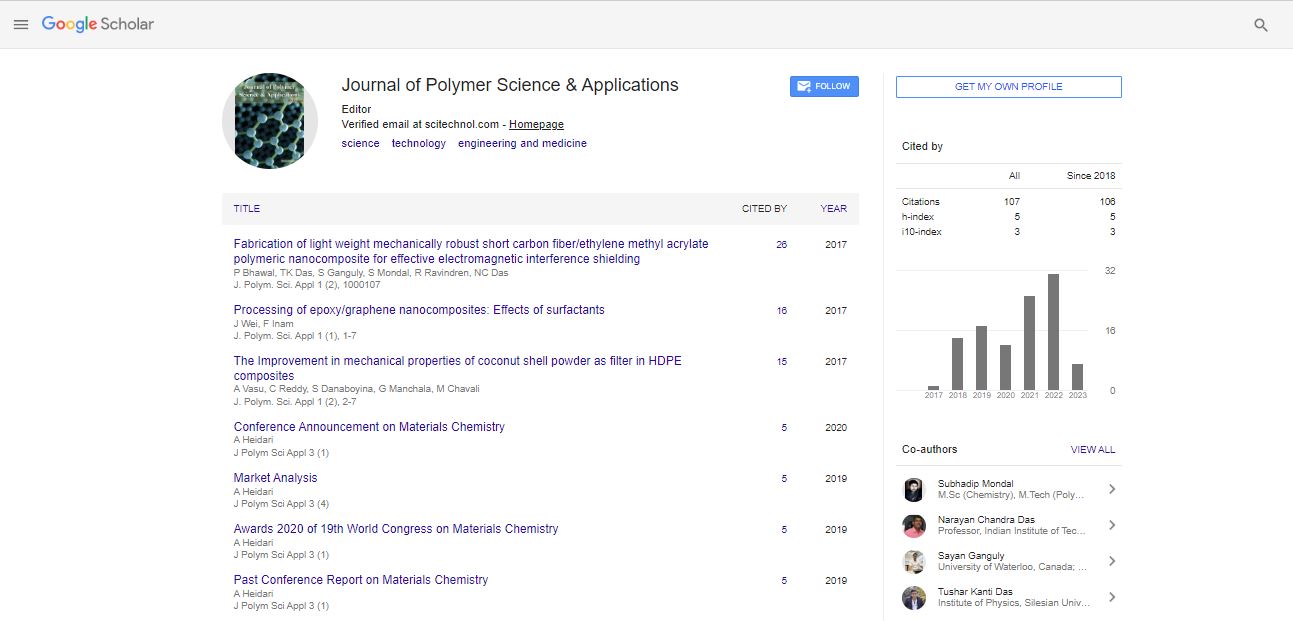Polyhedral Oligomeric Silsesquioxane (POSS)-based cationic conjugated phenosafranin for efficient ROS transfer and antimicrobial activity
Rozga Wijas K, Katarzyna Turecka, Krzysztof Waleron and Lucja Knopik
Centre of Molecular and Macromolecular Studies of Polish Academy of Sciences, Poland
: J Polym Sci Appl
Abstract
The main focus of this study is the synthesis of lighttriggered ROS-responsive phenosafranin- Polyhedral Oligomeric Silsesquioxane (POSS) conjugates as water-soluble nanoparticles for photodynamic antibacterial therapy of grampositive and gram-negative bacteria. The emergence of strains of human pathogens resistant to conventional therapies requires the development of novel and effective therapeutic technologies. One of them is antimicrobial photodynamic inactivation (APDI). This therapeutic method combines the use of a non-toxic photosensitizer (PS) with non-ionizing visible light, in which the wavelength must be effective to excite the PS to a reactive triplet state. This reaction will generate singlet oxygen (1O2) and other reactive oxygen species (ROS) that are highly toxic to cells. Because of the rapid and effective actions of ROS and its multi-target nature, APDI is less likely to induce bacterial resistance. POSS cages composed of silicon and oxygen atoms in the ratio 1: 1.5 are chemically inert, nontoxic, and easy to modify. Due to their specific biocompatibility, biodegradability and amphiphilic properties of the siloxane bond structure, they are readily used as drug delivery system. The phenosafranin positively charged molecule is promising as a next generation photosensitizer due to its high singlet oxygen (1O2) quantum yields and good triplet quantum yields (ΦT = 0.2 - 0.42). However, the strong π-π interaction between phenosafranin molecules, easy degradation and potential toxicity to normal cells greatly limit their further applications. We expect the phenosafranin-POSS conjugate to meet criteria for ideal nanocarrier such as excellent chemical and photochemical stability, easy migration into the bacterial cell and, most importantly, high capacity to load the drug without self-quenching effect of photosensitizer. We chose phenosafranin, daunorubicin and ciprofloxacin to combine with the corners of the rigid POSS cage. This structure ensures precise separation of the photosensitizer molecules to avoid aggregation.
Biography
Rozga Wijas K has completed her PhD in 1989 and habilitation in 2018 from Centre Molecular and Macromolecular Studies Polish Academy of Sciences, Poland. She is an assistant professor at CMMS PAS, Poland. Her publications have been cited over 550 times, and her publication H- index is 12. Principal research interests and expertise include issues of silicon chemistry, polymerization, in particularly the synthesis of multifunctional silsesquioxanes and hybrid materials, and the mechanisms of their modification for specific applications, including macrocatalysts, multifunctional reagents, drug carriers, probes and new photosensitive POSS derivatives for photodynamic inactivation of pathogenic microorganisms and photodynamic therapy.
 Spanish
Spanish  Chinese
Chinese  Russian
Russian  German
German  French
French  Japanese
Japanese  Portuguese
Portuguese  Hindi
Hindi 